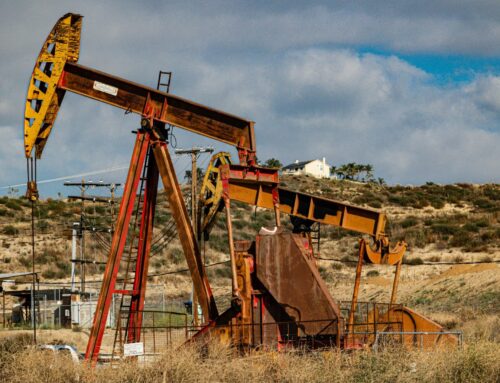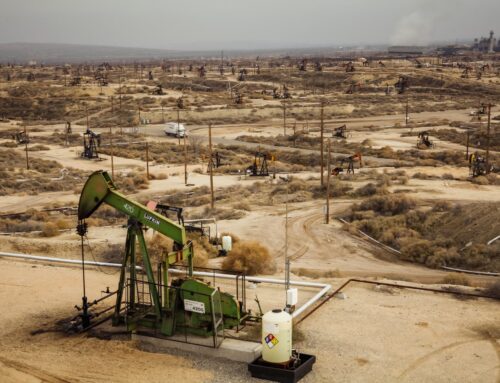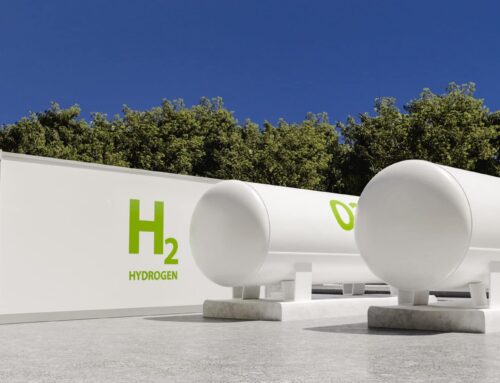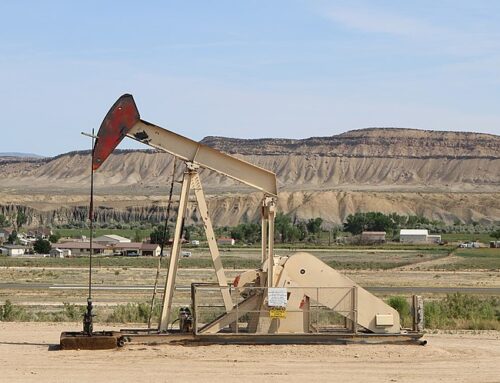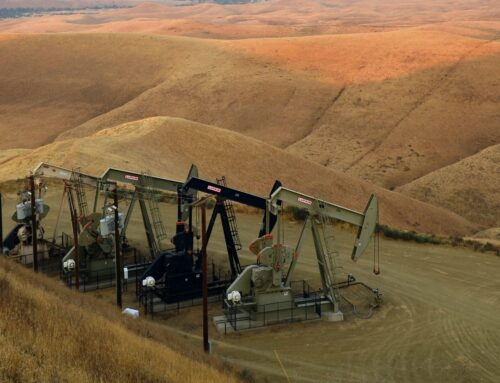View/Download this article in PDF format.
The Department of Energy (DOE) loan guarantee program was created in the Energy Policy Act of 2005 to provide Treasury-backed loan guarantees for selected energy projects. These include fossil fuel technologies such as coal-to-liquid, or converting coal into a liquid fuel through the Fischer Tropsch Process, and advanced coal gasification, among others. Several companies have sought fossil fuel loan guarantees in response to a 2008 solicitation for applications, but a recent government report indicates that only one applicant is currently being considered for approval.
However, in July, DOE announced it offer an expanded, second solicitation for fossil fuel loan guarantees later this year. Due to the DOE loan guarantee program’s lack of basic taxpayer protections and overall structural flaws, taxpayers stand to lose billions on these risky, high cost projects.
Below you will find information on the advanced fossil energy technology portion of the DOE loan guarantee program and background on the projects that have applied to receive federal guarantees under the 2008 solicitation.
Background
Title XVII of the Energy Policy Act of 2005 authorized the Secretary of Energy to make loan guarantees for a variety of types of energy projects. While the program was intended for emerging energy technologies, mature industries like coal and nuclear are eligible as well. Congress provided the program with funding in several areas including advanced nuclear reactors, renewable and energy efficiency, front-end nuclear fuel cycle technology, and advanced fossil fuels. To date, the loan guarantee program has provided 30 final guarantees and ten conditional commitments for renewable and energy efficiency, nuclear reactor, and uranium enrichment projects. Of the ten conditional commitments, four projects requesting a total $10.33 billion are still considered ‘active’ by DOE today and nine applications totaling $4.8 billion are being reviewed for conditional commitments.
Currently the DOE program has $8 billion in congressionally directed loan guarantee authority for advanced fossil energy technologies. This authority is allocated into two pots of authority—$6 billion for ‘coal-based power generation and industrial gasification’ and $2 billion for ‘advanced coal gasification’ (See Table 1 below).
| Table 1: DOE Loan Authority for Advanced Fossil Energy Technology | |
| Recipient Technology | Current Allotment |
| Coal-based Power Generation and Industrial Gasification | $6,000,000,000 |
| Advanced Coal Gasification | $2,000,000,000 |
The loan guarantee authority for fossil fuel loan guarantees has no sunset and has yet to be committed to any project. In response to the 2008 solicitation for fossil applicants, eight companies applied. But only one is currently being reviewed. In March 2013, a Government Accountability Office (GAO) reported that only one fossil fuel applicant requesting a $2.8 billion loan guarantee was considered ‘active’ by DOE.
While the first and second fossil fuel loan guarantee solicitations aim to support the commercialization of advanced fossil fuel technologies, stark differences exist between the two. Under the 2008 solicitation, eligible fossil fuel technologies include, but are not limited to, coal-to-liquid, petroleum coke-to-gas, integrated gasification combine cycle, coal-to-gas, and supercritical (coal-fired power plants whose power generation efficiency reaches 36 percent or greater and operates at a minimum of 3,200 lbs/in2). Under the second solicitation announced in July 2013, the description of eligible technologies was vastly broadened to include “any part of the full lifecycle of fossil energy development” including everything from resource development to efficiency improvements and CCS integration. Moreover, the basic definition of ‘fossil fuel’ was expanded to include, but not limited to, coal, natural gas, oil, shale gas, oil gas, coal bed methane, methane hydrates—in contrast to the first solicitation which was focused almost exclusively on coal-fired power systems.
Applicants
Eight companies applied for advanced fossil fuel loan guarantees under the 2008 solicitation . From 2007 to early 2009, Baard Energy pursued a loan guarantee worth $1.2 billion for its proposed $6 billion coal-to-liquid plant near Wellsville, Ohio. The plant aimed to produce 53,000 barrels of liquid coal per day while creating 250 MW of electricity. In March 2009, facing repeated project delays and cost increases, Baard Energy was forced to withdraw their application. In December 2009, TX Energy, LLC (subsidiary of Eastman Chemical Company) announced the cancellation of its $1.6 billion Industrial Coal Gasification Facility and withdrawal from the DOE loan guarantee program. Similarly, MEP-I, LLC (a subsidiary of Excelsior Energy) and Mississippi Power Company have pursued advanced fossil fuel loan guarantees in the past and have since withdrawn. Table 2 provides a brief overview of the four early fossil fuel loan guarantee applicants followed by more detailed information.
| Table 2: Fossil Fuel Loan Guarantees | |||
| Project Title | Technology | LG Amount (billions) | Location |
| Medicine Bow Fuel & Power CTL Facility | Coal-to-Liquid | $1.7 | Medicine Bow, WY |
| Christian County Generation Industrial Gasification Facility | Integrated Gasification Combined Cycle (IGCC) | $2.6 | Taylorville, IL |
| Mississippi Gasification Industrial Gasification Facility | Petroleum Coke-to-Liquid | $1.7 | Moss Point, MS |
| Indiana Gasification Industrial Gasification Facility | Coal-to-Synthetic Natural Gas | $1.8 | Rockport, IN |
Applicant: Medicine Bow Fuel & Power Coal-to-Liquid Facility
A subsidiary of DKRW Advanced Fuels, LLC (DKRW), Medicine Bow Fuel & Power LLC is a hydrocarbon conversion company that has sought approval of a $1.7 billion Department of Energy loan guarantee. Based in Houston, Texas, DKRW would use the loan guarantee to build a large scale coal-to-liquid (CTL) plant in Medicine Bow, Wyoming. The proposed 200 megawatt CTL plant aims to produce approximately 11,600 barrels of liquid coal per day by processing more than 10,000 tons of coal into a variety of liquid fuel products, including gasoline and diesel fuel. Estimated at nearly $2 billion, the plant in Medicine Bow plans to incorporate carbon capture and sequestration (CCS) technology to reduce greenhouse gases by at least 50% which would then be compressed and sold for enhanced oil recovery (EOR) processes nearby.
Although little is known about the timing of the decision on the DKRW loan guarantee, DOE is currently completing an environmental impact statement (EIS) under the National Environmental Policy Act (NEPA) for the proposed CTL plant. Aside from a November 2009 ‘Notice of Intent’ released by DOE to complete the EIS, no progress has been made public regarding the status of DKRW’s loan guarantee.
In addition to a federal loan guarantee, DKRW has requested $245 million in tax-exempt bonds and $100 million in industrial development bonds from the state of Wyoming to help finance the project. Moreover, the company has applied for $200 million in cost-share funding through DOE’s Clean Coal Power Initiative.
Despite over the years DKRW has signed contracts to sell the plants products, as well as signed license agreements for specialized technologies, the Medicine Bow plant is in its eighth year of delay. When first announced in 2004, the project had purported a completion date of 2010. However, pre-construction activities on the project only began in November 2010 and the company recently revealed the project would be delayed yet another year with construction now estimated to begin in 2014. DKRW now projects the CTL facility will not be completed until 2018.
Applicant: Christian County Generation Taylorville Energy Center
Headquartered near Taylorville, IL, Christian County Generation, LLC was—until recently—waiting to receive a $2.6 billion loan guarantee for its coal-fired integrated gasification combined-cycle (IGCC) power plant. Christian County Generation is a joint-venture company owned by Tenaska, Inc.—a power development company based in Omaha, Nebraska—and MDL Holding Company LCC, based in Louisville, Kentucky. The power plant was proposed as a state-of-the-art facility, exemplifying the commercial viability of clean coal technology. However, in May 2012, Tenaska cancelled plans for the coal-fired facility and unveiled modified plans to construct a 611 MW natural gas-fired combined cycle facility. The new plan may disqualify Taylorsville from a receiving the $2.6 billion loan guarantee, however no official announcements have been made by DOE. As of July 2013, the $2.6 billion Taylorville Energy Center loan guarantee has been de-listed from DOE’s tracking website.
Although Tenaska shifted plans for the plant, they did not give up on coal gasification. If coal prices become competitive once again, the new facility would also be capable of accepting synthetic natural gas in the future. Thus, the coal-fired portion of the facility was only suspended. Tenaska states, should conditions improve “the second phase of the project incorporating coal gasification with carbon capture and storage could proceed.”
Initial construction for the coal-fired Taylorville Energy Center was projected to begin in mid-2011, however project delays and rising costs have kept the facility from meeting that goal. As originally envisioned the project would have produced 700 MW and process more than 7,500 tons of coal per day, as well as incorporated carbon capture and sequestration (CCS) technology to reduce greenhouse gases by at least 65%. Similar to the FutureGen project being developed in Morgan County, the Taylorville Energy Center strived to be one of the largest ’clean coal’ facilities in the United States.
Estimated at more than $3.5 billion, the Taylorville plant was also selected to receive $417 million in federal tax credits through the American Recovery and Reinvestment Act of 2009 (ARRA). Tax credits and loan guarantee combined, the coal-fired IGCC plant was set to receive nearly $3 billion in federal support—subsidizing more than 85% of the project. The new plant proposal is now estimated at one-third of the original cost.
In June 2013, Tenaska announced the cancellation of the Taylorville Energy Project as originally envisioned and under modified plans. The company states the cancellation was due to low natural gas prices and a failure to lock-in a 30-year power purchase agreement with the state of Illinois after being turned away from private utilities.
Applicant: Mississippi Gasification Industrial Gasification Facility
In December 2008, Mississippi Gasification LLC, a subsidiary of Leucadia National Corporation, applied to receive a loan guarantee valued at approximately $1.7 billion to finance the construction and startup of a large-scale petroleum coke gasification facility. The proposed $2 billion gasification facility would convert more than 7,000 tons of petroleum coke into 120 million cubic feet of synthetic natural gas per day and be constructed near Moss Point, MS. Petroleum coke is a byproduct of the petroleum refining process and behaves similarly to coal in the gasification process.
Initial construction for the Mississippi gasification plant is set to begin in 2012, with total project completion by 2015. However, low natural gas prices and technical design issues have delayed the final operational start date. In its 2009 annual report, Leucadia voiced concern on the long-term viability of the project stating “we still face the risk that long-term natural gas prices will remain too low to make the projects feasible.” In a change of plans, Mississippi Gasification announced last summer it intends to change the end product of its gasification facility to “gasoline, methanol, or both” due to continuing record low natural gas prices.
Mississippi Gasification LLC plans to partner with Denbury Resources and Leucadia Energy LLC to incorporate carbon capture and sequestration (CCS) technology in an effort to reduce up to 90% of the carbon emissions to be used for enhanced oil recovery (EOR) processes in nearby oil fields. To incorporate this technological addition, DOE announced the CCS portion of the project would be awarded $840,000 from the American Recovery and Reinvestment Act (ARRA) in 2009. Further, the former Governor of Mississippi Haley Barbour awarded $300 million in tax-exempt Gulf Opportunity Zone bonds to Mississippi Gasification LLC in 2008. Gulf Opportunity Zone bonds were established by the state of Alabama, Louisiana, and Mississippi after Hurricane Katrina to assist with economic recovery.
Though Mississippi Gasification LLC first applied for the loan guarantee in late 2008, little progress has been made on the project’s construction. First, the plant requires an environmental impact statement (EIS). In November 2009, DOE released a ‘Notice of Intent’ to complete an EIS for the gasification facility but since then, no updates have been provided. The pending EIS is listed as ‘Schedule Under Development’ on the DOE website.
In July 2013, Mississippi Gasification announced it has suspended plans for the Industrial Gasification facility in Moss Point, MS. The announcement came when the company did not renew a lease agreement for the proposed project site. The project has not been cancelled, however, states Mississippi Gasification. “[W]e remain committed to developing this project at an alternative location that will produce economic benefit for Mississippi and the gulf coast region,” says Project Manager Dexter Cook. The company also announced it is has changed its name to Mississippi Clean Energy.
Applicant: Indiana Gasification Industrial Gasification Facility
In 2006, Leucadia National Corporation started developing additional plans for a $2.8 billion large-scale coal gasification facility near Rockport, Indiana. A subsidiary of Leucadia Corp., Indiana Gasification LLC applied to receive a DOE loan guarantee valued at approximately $1.8 billion in March of 2009. The proposed 300 MW coal-to-synthetic natural gas (syngas) plant would produce approximately 47 million mmBtu of substitute natural gas from more than 10,500 tons of coal per day. In addition to the production of synthetic natural gas and electricity, the coal-to-gas plant intends to incorporate carbon capture and sequestration technology to reduce carbon emissions of up to 85%, to be sold to Denbury Resources for enhanced oil recovery processes.
The Indiana Gasification LLC project has gone through a whirlwind of project delays, costs increases, and restructurings and today, all projects activities have been suspended. Originally envisioned to be completed in 2011, the Indiana coal-to-gas plant was officially put on hold on by Indiana Gasification LLC in November 2008 after it failed to reach long-term above-average power to purchase agreements with local utility companies. To compensate for local utilities not willing to take the financial risk, the Governor of Indiana signed legislation in 2009 for the Indiana Finance Authority (IFA) to purchase the coal-to-gas plant’s synthetic gas for a period of 30 years. Similar to Leucadia’s Mississippi Gasification plant, low natural gas prices and technical design issues could also delay the final commercial operation start date for the Indiana Gasification plant.
Since Leucadia first applied for a federal loan guarantee, total project costs for the Indiana coal-to-gas facility have changed more than a half-dozen times. Project costs have ranged from $2 billion in June 2010 to $2.9 billion in May 2012. Most recently, total costs are estimated to be $2.8 billion and the final completion date is projected for 2015—four years behind schedule.
On April 27, 2013, after many months of debate, the Indiana state legislature voted to mandate an additional review of the 30-year power purchase agreement between Indiana Gasification and the State of Indiana Finance Authority. In response, Indiana Gasification stated that all project activities have been suspended indefinitely as it attempts to appeal the legislative decision with the Indiana Supreme Court. The Indiana Supreme Court decided to take up Indiana Gasification’s appeal on June 6, 2013 and is currently being considered.
High Risk Concerns with Fossil Fuel Applicants
The Department of Energy loan guarantee program requires applicants to avoid, reduce, or sequester at least 50 percent of the carbon emissions their projects will emit each year. Carbon capture and sequestration (CCS), the technology that many of the advanced fossil energy loan guarantee applicants intend to incorporate to contain carbon emissions, is an unproven and highly expensive technology.
On top of high costs and technical problems, low natural gas prices have significantly impacted the viability of commercial fossil fuel-based power plants. Half of the fossil fuel loan guarantee applicants are projected to produce synthetic natural gas, i.e. syngas, from coal. But producing syngas would not make economic sense while conventionally extracted natural gas is at record low prices.
Taxpayer Risk
Earlier this year, the Department of Energy stated its intension to use all the remaining authority for awarding advanced fossil energy loan guarantees. But the technologies these fossil fuel-based projects intend to demonstrate are costly, unproven, and uncompetitive with other fuel sources.
If awarded, taxpayers could be saddled with up to $8 billion in high risk guarantees. Furthermore, federal taxpayers should not be asked to provide subsidies to the, well-established and highly profitable fossil fuel industry.
High costs, construction delays, and technical problems still plague the coal gasification, CTL, and CCS industries making it a risky prospect for any investor—especially federal taxpayers facing trillion dollar deficits over the next decade. Putting the full faith and credit of the U.S. government behind these costly and risky projects is fiscally irresponsible.
For more information, please contact Autumn Hanna at (202) 546-8500 x112
Or autumn@taxpayer.net

